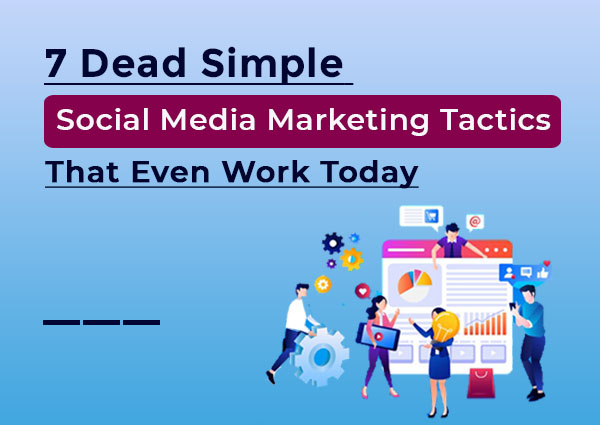7 Dead Simple Social Media Marketing Tactics That Even Work Today
In the following, we will be discussing an important topic that is “7 Dead Simple Social Media Marketing Tactics That Still Work today” and will discuss it in detail within the article: These social media marketing tactics may not be fresh, but they are effective. Consider this your reminder that going back to basics is cheap, easy and will definitely get you results:
1. Post Your Content Repeatedly on Social Media
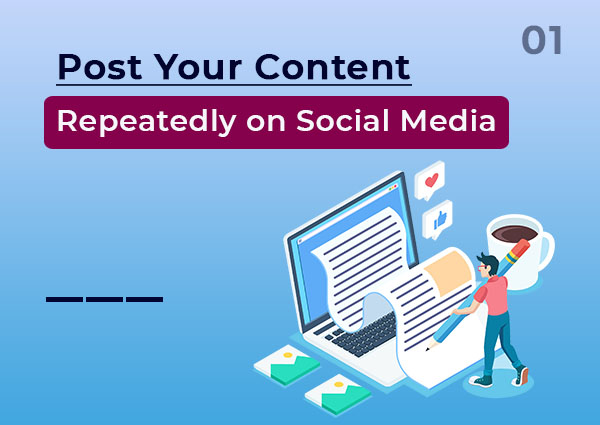
The first twenty-four hours once you publish a piece of content are the most crucial for bringing in traffic. When a piece of content is fresh and people are seeing in for the first time, that’s when you’re going to get the most clicks. Promoting that content on social media can easily help you double your traffic if you post it more than once in that timeframe.
Right after you hit publish, promote your content immediately on all of your social networks, and then do it two more times in the first 24 hours. To avoid being seen as spam, change up your messaging. For example, try one that’s a summary, one that’s a question, and one that’s a quote to mix it up.
If you’ve got someone else to share your link, coordinate your publishing and promotion schedules if possible so all of the posts happen in the first 24 hours. This timeframe is especially important when it comes to YouTube videos – ranking is largely determined by how many views and engagements a video receives on the first day after its uploaded.
2. Push Content to Your Email List
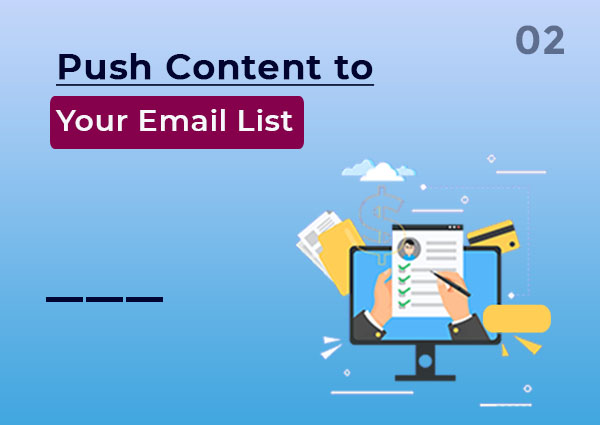
Another way to boost your engagement in the first 24 – or even 48 – hours, after you publish something, is to send it out to your email subscribers. After all, your email list is comprised of your most loyal followers and they’re the ones who are most likely to like and share your content. For maximum reach, coordinate your email blast with your social media posts and any outside promotion you’ve lined up. Basically, make all your marketing channels work for you simultaneously to get your new content in front of as many eyeballs as you can, as quickly as you can.
And don’t just promote your text-based content in your emails. Incorporating video into newsletters (and making sure the subject line includes the word “video”) can increase your open rate by 6%.Content doesn’t have to be brand new for you to use these first two strategies, either. A popular evergreen post will benefit from the same cross-channel strategy as a fresh one, especially if it’s been recently updated. Just make sure you don’t keep older content in constant rotation in your emails; if users see the same piece over and over, they’re likely to unsubscribe.
3. Post a Portion of Your Content on LinkedIn
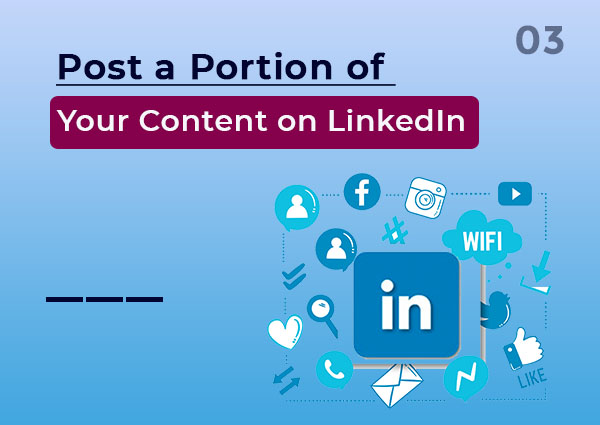
If you have an article or a blog post you want to promote, but the first few paragraphs on LinkedIn, along with a “click to continue” link that brings users back to your website to finish reading it. You’ll get 3-4X more traffic than you would if you just posted a link to your content. You can do this on Facebook too, but be sure to include an image or video. LinkedIn users do not mind reading the text, however, when on Facebook, visuals matter. The more eye-catching and engaging the content is better.
4. Repurpose Your Content

If you take each piece of content and reformat it for other channels, it can take on a lifelong after a video is uploaded to YouTube or a blog post is published.One advantage to repurposing content is that it saves you time. The content is already there – you just have to tweak it so it works in different formats.We have been very successful with our Content Sprout Method. After we create/make a piece of content, we rework it into many different formats. For example, we might start by going live on YouTube. Then we’ll:
- Turn it into a Growth Everywhere podcast
- Create a 30-second video teaser for Instagram
- Get a transcript through Rev as well as turn that transcript into a blog post
When repurposing content, it’s important to format it natively for the platform you’re posting it on. You can turn your content into video, images, text, and infographics – whatever works best for each channel and each piece of content. Don’t try to make something work if it doesn’t feel organic; it’s better to do something right than to do something just to do it.
Once you’ve turned one piece of content into several different pieces, you can go back to the first two tactics – promoting it across social networks and via email – and voila! You’ve tripled the number of people who see that content. Before you start putting a lot of time and resources into repurposing content, however, make sure that you’re focusing on your best content. You don’t want to create 12 versions of everything you publish on your blog or upload to YouTube. Wait and see which topics and content types perform well, and then make those your focus.
5. Post the Entirety of Your Content 1 Week after the actual Publication
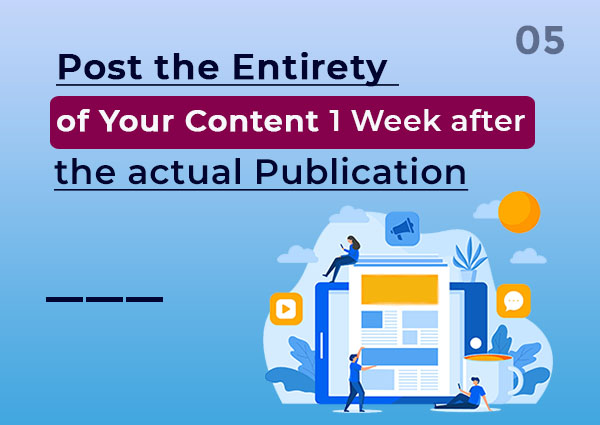
The first 24 hours after publication are important, but so is getting the most out of a piece of content. With text-based content like blog posts and articles, you can post them in their entirety on Facebook or LinkedIn. Not a lot of people do this, but they should. The average organic reach of a brand’s post on Facebook is only 6.4% of the page’s total likes. That’s pretty dismal, and it’s why you need to focus on engagement. The more engagement that your posts receive the broader your reach will be. Long posts also work really well on LinkedIn.
That’s about the same length as most of the first-page results on Google search. So when you’re creating your long-form content don’t forget this LinkedIn step. What you will find when you employ such a strategy is that you end up with a ton/lot of engagement. Social media sites want to keep people on the platform, not send them to another destination, so they reward you for posting meaty content that doesn’t link out. Then later, when you do post links to your own website, you’ll get more views and clicks.
6. Use Analytics to Find Your Most Successful or famous Topics

If you already have a decent amount of published content, use analytics to figure out what your most successful topics are and then create more content around those topics. There are several tools you can use to identify your winning subject matter. We use a lot of tools to track this, but three that I think are worth mentioning are:
- Libsyn for our podcasts
- Social Blade for social media
- TubeBuddy to analyze our rankings for topics on our YouTube videos
We discovered that our top-performing episodes were all related to SEO. So now we’re putting more of a focus on SEO because that’s what resonates most with our audience. That’s not to say that we won’t do other topics. We will. But we want to make sure that we’re giving our audience what they really want on a regular basis.
It helps our audience by giving them the information they’re seeking, and it helps us by giving us, listeners. It’s a win-win. Using analytics as your guiding star means you’re no longer operating based on your gut. You’re operating based on data. And that data will help you execute on the right topics and types of content to increase your traffic and engagement rate.
7. Keep Your Paragraphs Short

Finally, when it comes to text-based content, the shorter the sentences are, the longer their reach is. This goes for articles and blog posts, obviously, but it also goes for social media posts and YouTube descriptions.
If people see shorter sentences before they’re prompted to read more, they’ll be much more likely to absorb all the information you’re giving them. That makes them much more likely to click that link, which further boosts your engagement and increases your chances of going viral.


